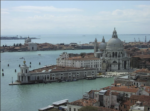Stephen Felton – remember me maybe
.jpg)
Mostra personale
Comunicato stampa
Two three things
I know only a few things about Stephen Felton: that he is two years younger than me, that he lives in New York, that throughout all of his exhibitions his paintings share the same format, all on a white background in which the surfaces are crossed almost entirely by wide signs and marks which are treated as an outline of things which sometimes you won’t recognize, and others you will. Some fishes, the plans for a building, a starry sky, a thunder storm, etc; works which he painted for his exhibition at Frutta after looking and looking again at hieroglyphics, in order to reinterpret them. Still it’s funny (I never met him, that’s for sure, but isn’t the little I know perhaps all there is to know about his work?) to recap on one or two things – if only to confirm or subvert them – about painting. That is to say, some of the problems that painting is facing nowadays, and which Felton’s paintings seem to highlight:
that representation and abstraction are two obsolete words
Not only because of Richter, who has determined a sort of equivalence between abstraction and representation by keeping them as two intact categories. I am thinking, rather, (prior to Richter) of the cut-outs and collages of Matisse’s late period and (after Richter) of paintings by an artist like Michael Craig Martin, where the objects are rather ideas of objects, flayed elements that undergo a ferocious, detached pressure, an unfeeling reasoning of composition. How can one name the things painted by Felton other than as “reduced-to-the-bones”, or in some cases, “abstract figures”?
(A little footnote: I brought Matisse to the table and it wasn’t accidental. Felton’s approach to drawing with colors, and with white – maintaining a balance between them in order to represent things which are not there to declare their own presence, but to occupy the surface, to open up to the space, and lay down onto the white – makes me think very much to Matisse’s last works.)
that painting is not storytelling
That is to say, it does not tell stories as it’s no longer able to do so, since time immemorial. The point is that Felton, when exhibiting a series of paintings inspired by Melville’s Moby Dick – on the occasion of a recent solo show at Chez Valentin – linked this impossibility to the The Great American Novel: a very brave thing to do if contextualized within his intentionally bare vocabulary.
What did it wind up being? A fragmented (although virtually complete) story, stripped to the bone, with no drama, in which some of its motifs (the whale, the hunting, a boat, the sea, the white) were juxtaposed with a cheerful volatility.
that some painting is about the transient
And not the finished, the unresolved, the falls and the failures, according to Raphael Rubinstein in Provisional Painting, one of the most influential texts recently written about painting. In the article – published across two issues of Art in America – he describes a form that has been developed for more than a century of history, involving artists such as Cezanne (the Cezanne of the Mountain Sainte Victoire), Mirò (the one who signed an unexpected Cloud and Birds), or Raoul de Keyser, or Mary Heilmann. Or Martin Barrè, who Felton has been at points associated with.
Why does Felton’s practice seem to embrace this thread of the temporary? Is it due to its soft tone, to a generic impression of incompleteness, to the absence of virtuosity and flashes, to its total indifference to questions of style?
And why, on the contrary, does he distance himself from it? Due to a somehow assertive tone, for his cheerful yet decisive line, for the absence of reluctance and trembles, for the way in which his figures occupy the surface by fully adapting to the paintings’ dimensions?
that is better to paint with the mind busy somewhere else, than thinking about the problem of painting
Indeed for his show at Frutta, Felton painted with hieroglyphics in mind: “So I went to the Met several times to view the Egyptian galleries and studied hieroglyphics a bit, as an amateur of course, through books and such. Then I made my own version loosely based on hieroglyphics and some things I just made up that I thought were meaningful and connected.”
Davide Ferri
* Simultaneously, we will present Digos Boia, a solo exhibition by Daniele Milvio at Hadrian - our project space.



